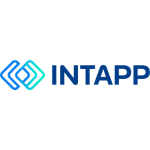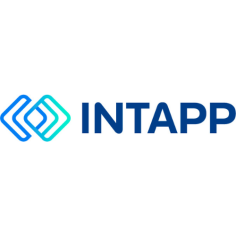Intapp: Pitch and RFP analysis for law firms – Leveraging proposal analytics to increase content relevance and win rates
Prior to automated pitch and RFP analysis, legal marketing and BD teams often spent weeks drafting and organizing the necessary documents to deliver to client representatives in person. Then once the binders were out of their hands, they waited for questions and feedback —hoping their pitches would win the business.
Today, law firms are leveraging technology for many of these processes — delivering proposals electronically, of course, but also tracking pitch and proposal analytics to gather critical intelligence. In much the same way that most firms now use software to analyze their website traffic — including page views, content engagement, and duration on the site for individual user profiles — they’re now applying similar tools to their pitch and proposal work.
Software that codes and tag pages within proposal files can reveal how clients engage with a given PDF, providing marketing and BD teams with vital pitch and proposal analytics. Because client representatives are consuming the content digitally, marketing and BD teams can collect valuable data.
Using these capabilities, your own marketing and BD team can gain the visibility it needs to make data-informed decisions that proactively drive the sales cycle. Over time, an objective, data-based approach to assessing the factors in proposal performance can enable continuous improvement and ultimately higher win rates.
Capturing intelligence on decision-makers and influencers
Firms that use pitch and RFP analysis tools benefit significantly — even just by learning who’s looking at the proposal. For example, data capture will typically reveal that friendly contacts known to the client team are participating in the review process. It also reveals when members of the core client-side review team forward the file to others in their organization — sometimes to stakeholders previously unknown the BD team; sometimes to senior stakeholders such as a CFO or head of corporate counsel department.
From pitch and proposal analytics like these, you can glean actionable information. In the case of previously unknown reviewers, your team can use your CRM and other external data sources to determine their roles in the client organization, gain insight into their background, identify relationships and estimate the nature and extent of their influence over the vetting and decision-making process — then add these individuals to the firm CRM if not already there for future outreach efforts. In the case of senior reviewers, who likely have influence over the budget, you’ll want to reach out to friendly client contacts for advice on how to effectively engage with executive stakeholders.
Leveraging pitch and proposal analytics to track content engagement
Responding to requests for proposals requires a significant investment in time and mindshare for marketing and BD teams, which is why many firms routinely repurpose content to accelerate production and reduce resource drain. For example, marketing and business development teams will reuse assets like award announcements, online firm history, and other generic content as part of the proposal boilerplate.
Although reviewers won’t be surprised to find generic content in your proposal, they’ll likely bypass it and head directly to what’s relevant to their role and interest. For example, using pitch and proposal analytics, you might find that a reviewer accessed the fee structure section three times for several minutes, which could indicate that this stakeholder is focused on budget and spend. If another reviewer spent a significant amount of time on a lawyer’s bio, this could indicate that the stakeholder is interested in working with this person specifically.
Analyzing proposal content interaction serves multiple purposes: You can identify content that’s performing well, determine which sections are being ignored, and zero in on which areas are engaging specific client stakeholders. By applying this intelligence, your marketing and BD team can make informed decisions about sections to keep, omit, streamline, or reorder.
Refining pitch and RFP analysis longitudinally
While pitch and proposal analytics provide valuable insights, they’re also subject to interpretation — which means that marketing and BD teams need to make judgment calls and run A/B tests, or iterations of trial and error. By studying the reviewers’ interactions with the proposal, your team can begin refining and optimizing. For example, if reviewers skip over the firm’s history and head straight to notable wins, you might decide to run a test in which you move the notable wins section to the beginning of the document to compare performance. Or, if a lengthy section of boilerplate content is routinely bypassed, your team might consider refreshing the section, which could entail reducing the copy and adding visuals to create a more streamlined, inviting content experience. Over time, the A/B testing that pitch and proposal analytics facilitate will reveal patterns of interaction, and eventually correlation to win rates.
Ultimately, the output of your A/B testing will reveal what’s relevant to clients and prospects. When your marketing and BD team can leverage data-driven insights to produce a final piece that demonstrates that you understand and are aligned with their concerns and priorities, you can expect an uptick in win rates.



